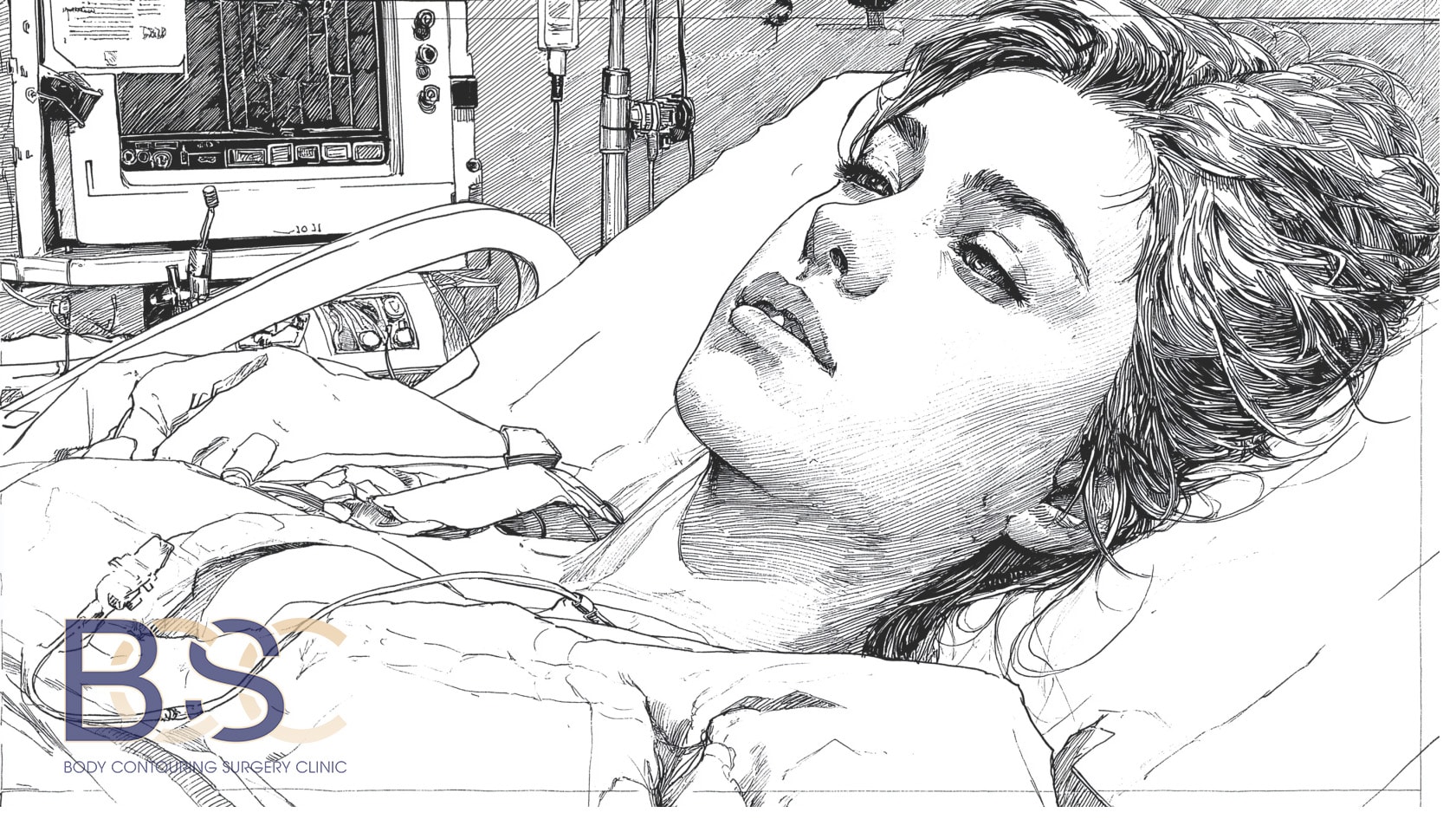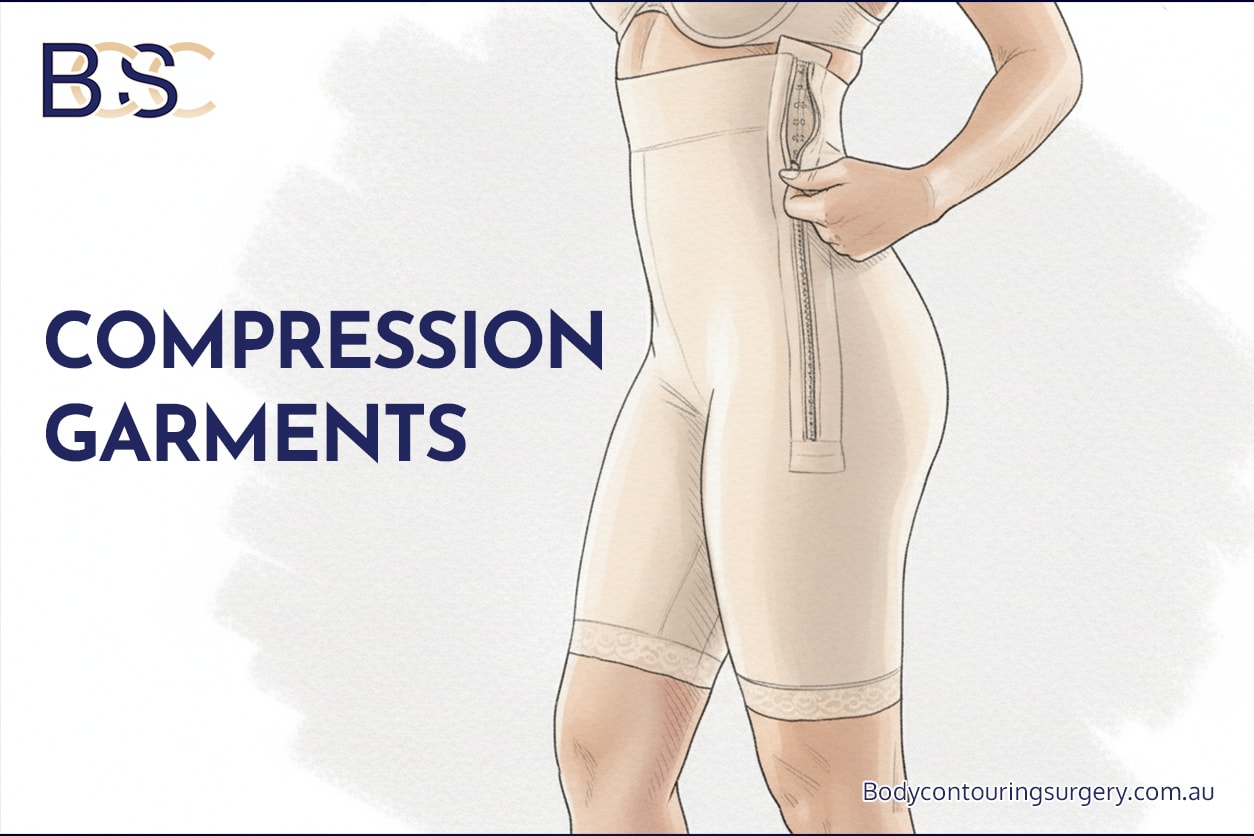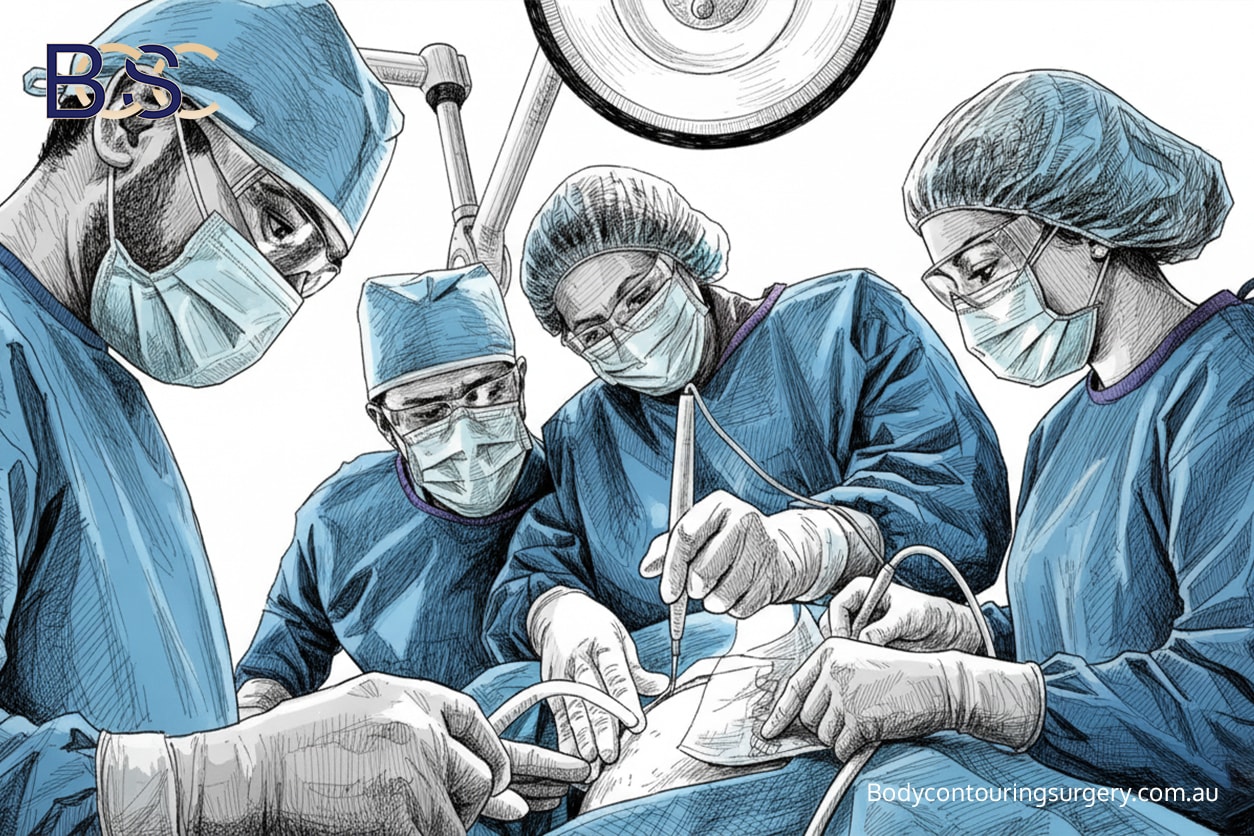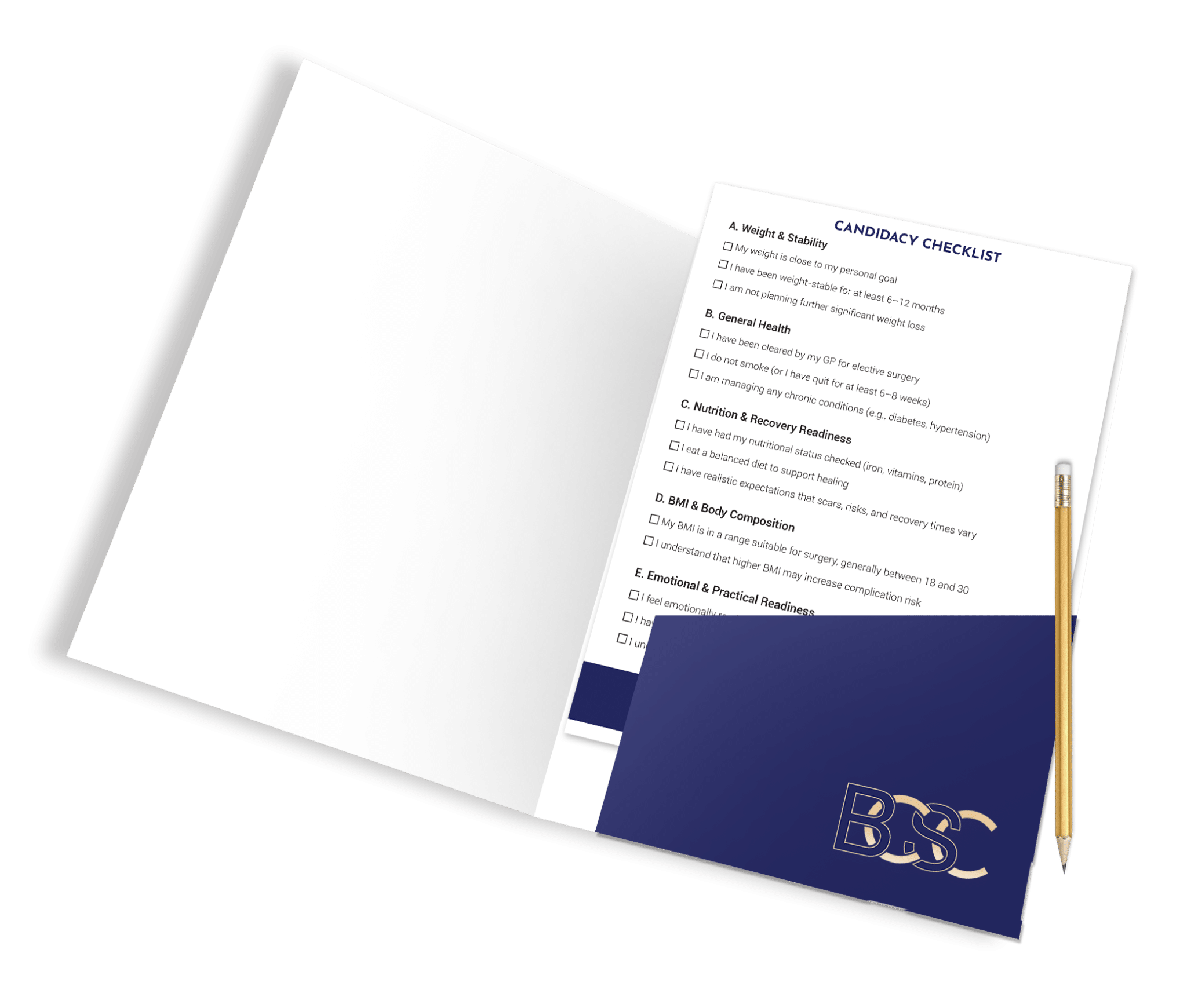Abdominoplasty Post Weight Loss Recovery Process (Standard and Extended Abdominoplasty)
For many people who have achieved significant weight loss—either through bariatric surgery such as a gastric bypass or through lifestyle change—the next stage of their journey is often managing excess skin and fat that does not contract naturally. These changes in the abdominal region can affect mobility, hygiene, and comfort. Some individuals experience rashes, skin irritation, or difficulty finding clothes that fit well after weight loss. An abdominoplasty (tummy tuck) can help with these physical concerns through a carefully planned surgical procedure.

An abdominoplasty surgery is performed to remove excess skin and excess fat from the abdominal area, while also tightening the underlying abdominal muscles that may have separated during weight gain. For patients who have undergone massive weight loss, this operation aims to treat function and comfort rather than serve as an aesthetic procedure. However, it is still considered a form of aesthetic plastic surgery that requires careful preparation, commitment, and structured recovery.
At Body Contouring Surgery Clinic (BCSC), our team of Specialist General Surgeons (FRACS) perform tummy tuck (abdominoplasty) procedures at accredited private hospitals across Australia. Each hospital provides access to qualified nursing teams, 24-hour medical support, and comprehensive recovery facilities. Our surgeons collaborate with hospital staff and local providers to ensure each phase of the abdominoplasty post weight loss recovery process is optimised.
Understanding the Abdominoplasty Procedure

Anaesthetic for major surgery
During your abdominoplasty procedure, the surgeon will remove excess skin and perform muscle repair to reinforce the separated abdominal muscles (rectus diastasis). This helps the abdominal wall with core strength and stability.
In some cases, an extended abdominoplasty or Fleur-de-Lis abdominoplasty may be required, especially after massive weight loss. These techniques focus on loose skin that extends around the flanks or vertically up the midline. Each procedure is planned based on the patient’s medical history, body type, and recovery goals.
After surgery, you will wake wearing a compression garment to support your abdomen, help reduce swelling, and promote your body’s healing process. Temporary surgical drains are often used to prevent fluid build-up at the surgical site, particularly in the lower abdomen and upper abdomen areas.
Most patients stay in hospital for two to four nights, during which:
- Pain management is tailored using prescribed pain medications.
- The team monitors for blood clots, infection, or poor wound healing.
- Gentle walking is encouraged to prevent deep vein thrombosis (DVT).
- Nurses review the incision, change dressings, and provide written post operative care instructions before discharge.
This hospital phase provides the foundation for a smooth recovery and helps prevent complications in the early stages of healing.
Week 1: Early Recovery at Home

Early recovery
Once discharged, you will continue healing at home. Many patients need help with meals, personal care, and mobility for several days. It’s important to remain slightly bent at the hips when walking or lying down to reduce tension on the surgical site. Continue wearing your compression garment full-time for the first four weeks. This garment provides gentle pressure to minimise swelling and assist the healing process.
Follow-Up Appointments

Follow-Up Appointments
Your first follow-up appointment usually occurs between day 5 and day 7 post-surgery. During the first two weeks, you’ll have multiple nurse or doctor reviews, which may include:
- Dressing and drain review or removal.
- Assessment for irritation or signs of poor wound healing.
- 830nm LED light therapy to promote circulation and aid tissue recovery.
- Changing of PICO dressings and application of Hypafix tape.
Patients who have undergone massive weight loss may have fragile skin or reduced skin elasticity, requiring extra care during the healing process. Avoid bending or twisting movements that strain the incision.
Weeks 2–3: Early Healing Phase

Compression garment
By week two, swelling and tightness are still common. You may start walking more comfortably and performing light daily tasks. Gentle lymphatic massage is encouraged to reduce swelling and promote circulation. Our team offers guidance for at-home care.
During this period:
- Continue full-time use of your compression garment.
- Avoid heavy lifting and strenuous exercise.
- Keep hydration levels up and eat a balanced diet rich in protein to support healing.
- Sleep with your knees slightly bent to protect the incision.
Skin Care
It’s common to experience dry or flaky skin as swelling subsides. This is part of the body’s healing process. Using unscented moisturisers such as vitamin E cream or Bio-Oil helps maintain comfort. Avoid exposing your abdomen to heat or sunlight during this time.
Weeks 4–6: Building Mobility and Strength

Exercise after surgery
At the four-week follow-up, your surgeon will assess your incision, healing progress, and overall appearance of the abdomen. You may begin increasing your daily movement but must still avoid heavy lifting and core exercises. Some pain medication may be needed for mild discomfort or muscle tightness.
Scar management typically begins around this time using silicone sheeting or scar gels. The goal is to support even healing and minimise visible scarring.
Most patients can return to light work and daily activities after four to six weeks. However, every individual heals differently depending on their overall health and adherence to recovery advice.
Weeks 6–12: Functional Recovery and Activity
The next stage of recovery focuses on regaining strength and flexibility. You may notice firmness or numbness in the abdominal area, which gradually normalises. Light physical activity such as walking, stretching, or stationary cycling can be resumed, provided your surgeon approves.
By week six, the compression garment can be worn only during the day. The underlying muscles continue to strengthen during this phase, and it’s important to avoid any activities that strain the surgical site.
During this stage, follow-up appointments will assess:
- Scar progress and tissue flexibility.
- Persistent swelling or irritation.
- Early signs of potential complications.
Patients across Australia may complete these follow-ups in-person or via telehealth. Regular reviews ensure progress through the overall recovery process.
Three to Six Months: Long-Term Healing and Results
By three months, swelling typically resolves, and scars start to fade. The abdominal area becomes firmer, showing the results of your abdominoplasty surgery. Light resistance training and stretching can usually resume after clearance.
Maintaining a stable weight, eating a balanced diet, and avoiding weight fluctuations are essential for lasting results. A healthy lifestyle and regular physical activity help maintain tone in the upper body and core. Patients are advised to avoid strenuous exercise until cleared by their surgeon.

Proteine focused diet
Most patients achieve their final results between 9 and 12 months. By this time, scars soften, sensation returns, and your body shape continues to refine.
Travelling Patients and Supportive Care
Many patients travel from different parts of Australia to undergo tummy tuck (abdominoplasty) surgery with our BCSC network surgeons. We recommend staying close to your operating hospital for at least the first two weeks after surgery for optimal monitoring.

Traveling for surgery
After this initial phase, your four-week follow-up can be completed in person or via telehealth, and additional visits may be coordinated with your local GP. Surgeons can provide prescribed pain medications or e-scripts for antibiotics as needed.
Routine review schedule:
- 4 weeks (in-person or telehealth)
- 3 months, 6 months, and 12 months (telehealth available)
At least one in-person review at 6 or 12 months is recommended for clinical photography and assessment.
Tips for a Smooth Recovery
- Follow all post operative care instructions carefully.
- Attend all follow-up appointments and communicate any new symptoms.
- Wear your compression garment as advised.
- Stay active within limits to prevent blood clots.
- Eat a balanced diet and stay hydrated.
- Avoid nicotine and alcohol during healing.
- Protect scars from sun exposure for at least six months.
- Report any severe pain, redness, or unusual swelling promptly.
Emotional and Physical Adjustment
Healing after abdominoplasty (tummy tuck) can bring emotional ups and downs. Swelling, fatigue, and tightness are normal. Some patients experience temporary frustration as they wait for their body’s healing process to progress. Emotional support from family, friends, or support groups can help during this stage.
As healing continues, many patients notice movement, posture, and clothing comfort. Patience and realistic expectations are essential for a healthy mindset during recovery.
Long-Term Considerations
To maintain your results:
- Keep a stable weight through a balanced diet and regular physical activity.
- Avoid weight fluctuations.
- Discuss any future mini abdominoplasty or additional body procedures with your surgeon.
- Continue scar care and protect the area from sun damage.
Frequently Asked Questions
How long is the recovery from abdominoplasty surgery?
Most patients resume light activities by six weeks, but full internal healing takes 6–12 months. The timeline depends on your medical history and the type of tummy tuck (Abdominoplasty) procedure performed.
When can I bend over after a tummy tuck (abdominoplasty)?
You can usually begin bending at two to three weeks post-surgery when tightness subsides and the incision is stable.
How long does it take to walk straight after a tummy tuck (abdominoplasty) procedure?
Patients generally walk fully upright between 10 and 14 days after surgery.
What are the best tips for recovery after a tummy tuck (abdominoplasty) surgery?
Follow your surgeon’s post operative care instructions, wear your compression garment, maintain a balanced diet, and avoid heavy lifting or strenuous exercise until cleared.
Can I lose weight after surgery?
Patients can continue to lose weight under medical supervision, but maintaining stability is key to preserving results.
Is a limited tummy tuck (mini abdominoplasty) an option?
A mini abdominoplasty (limited abdominoplasty) may be suitable for patients with less excess skin removal needs, focusing on the lower abdomen rather than full muscle repair.
Conclusion

Recovering from abdominoplasty post weight loss involves dedication and patience. At BCSC, we support patients through every phase of the recovery process, from early wound care to long-term follow-up. Our surgeons perform tummy tuck (abdominoplasty) procedures in accredited hospitals, providing coordinated post-operative care and telehealth support where needed.
Each patient’s journey is unique. With professional guidance, consistent aftercare, and a focus on healthy habits, many patients achieve steady, long-term results. The full abdominoplasty recovery journey typically spans 6–12 months.




![Traveling After Arm Lift Surgery [ A Complete Guide ]](https://bodycontouringsurgery.com.au/wp-content/uploads/2023/11/BCSC_travelling_after_brachioplasty_surgery_-featured_image-1.jpg)